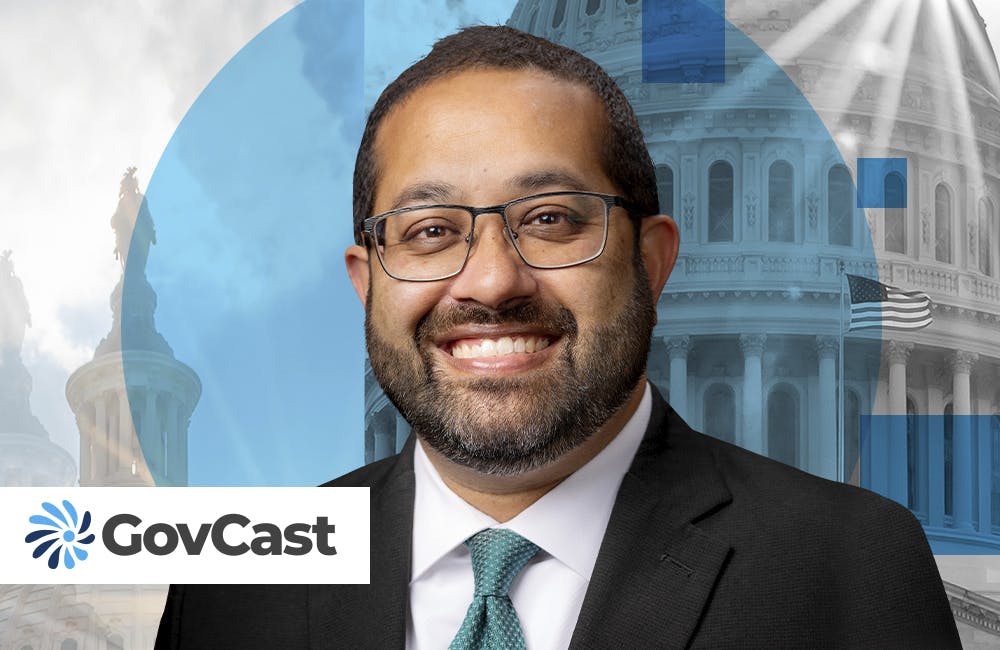VHA Integrating Opioid Dependency Treatment Within Broader Care
The agency outlined plans to incorporate predictive analytics in comprehensive behavioral health treatment.

Various programs at the Department of Veterans’ Affairs to prevent overdoses are focused on using data to better predict health care and integrate with the agency’s broader behavioral health model.
The department’s National Opioid Overdose Education and Naloxone Distribution (OEND) coordinator explained how the office’s efforts began before the national opioid epidemic had been widely identified in public health literature, effectively charting newfound territory with early initiatives to distribute the now widely adopted overdose prevention drug Naloxone, commonly known as Narcan.
The years leading up to the VA’s early work on Naloxone distribution were marked by an escalation in overdose fatalities, with nearly half a million Americans dying from overdoses between 2000 and 2014 — roughly as many Americans fatalities from WWII, the Korean War and the Vietnam War combined, OEND Coordinator Elizabeth Oliva cited at the VHA Innovation Experience event Oct. 22.
“More Americans now die annually from opioid overdoses than car accidents,” Oliva said.
Oliva has worked at the VA’s Naloxone distribution program since its inception and was taken by the drug’s proven ability to save lives.
“From 1996 to 2010, 53,032 people received Naloxone — with 10,171 overdose reversals reported,” she said. However, there were initial challenges in creating a nationally coordinated VA Naloxone program, as the distribution of anti-overdose agents were limited to oversight by local VA clinics. “We had no model on how to do this on a health care basis,” she added.
One of the early challenges was creating a standardized overdose prevention kit for wider dispersal as there were no commercial kits, Oliva said. The agency had to devise both the kit designs and networks of distribution without a preexisting model.
Regardless, the Rapid Naloxone Initiative was widely adopted across the VA — the agency launched its first Naloxone program in August 2013, with the standardized nationwide VA Naloxone program deployed by April 2014, Oliva noted. The Rapid Naloxone Initiative has so far proven a success, with nearly 800 potentially lethal overdoses known to have been prevented by the timely deployment of Naloxone to patients under VA care.
The Rapid Naloxone Initiative is connected to a broader reshaping in the VA’s addiction treatment that intends to improve patient outcomes through a holistic approach to behavioral health care emphasizing both technological solutions and clinician education, Oliva told GovernmentCIO Media & Research.
Overdose is the endpoint she never wants a VA patient to reach, and the Naloxone initiative was designed to save lives — but it takes care beyond that to heal lives. This is an instance in which predictive care is crucial for identifying veterans at particular risk of addiction or suicide, allowing them to get the specialized treatment they need, Oliva said.
The REACH VET program was designed with this goal in mind, and risk factors need to be shared with veterans in a way that allows them to feel both cared for and in charge of their treatment.
“How do we identify risk and share it to veterans in a patient-centric way?” she said.
Oliva underlined that this centers on a threefold concern — identifying patients at risk, why they are at risk and how to manage this risk. REACH VET takes existing data from health records to identify those who are at elevated risk for suicide, hospitalization, illness or other adverse outcomes.
There are multiple potential reporting nodes across the VA, Oliva noted, and the ultimate goal is to determine, “How can we make sure that any veteran across any reporting system gets the care they need?”
This effort also includes identifying suicide attempts and overdose as markers for more intensive and specialized treatment, an area of care that VA providers are looking to expand as a behavioral health priority. Post-overdose care is a particularly complex and sensitive area of patient care since not many providers get training in post-overdose care, she said.
Similar to how the Rapid Naloxone Initiative created a wider distribution network for overdose prevention, Oliva said VHA should prioritize designing a similar program for post-overdose behavioral care. This has necessitated a newfound phase of cross-departmental coordination across VHA, with experts aiming to share the breadth of research and experience necessary to design a program of this scope.
“We want to make sure that pain management and mental health care are at the forefront of national VHA initiatives,” she said. It will be crucial to examine the success of the Rapid Naloxone Initiative as a template, Oliva added, since leveraging preexisting expertise across VHA facilities allowed the program to scale with exceptional speed.
Beyond leveraging expertise within VHA to refine behavioral health treatment, Oliva mentioned VA is looking into intra-agency collaboration as a catalyst. This includes using the Department of Defense and Defense Health Agency to identify patients who might be at special risk of PTSD or substance abuse disorders and making sure they receive treatment and care before their mental health struggles become more severe.
Oliva remains optimistic about VHA’s potential to transform its overall behavioral health treatment, noting their success thus far is “a testament to VA providers understanding this is a huge issue.”
This is a carousel with manually rotating slides. Use Next and Previous buttons to navigate or jump to a slide with the slide dots
-

DOD Has a New Cyber Resiliency Assessment Program
Defense officials tout the continuous assessment feature and scalability of the new program amid increased cyber threats.
5m read -

Transitioning Systems for Modern Agency Missions
IT modernization is a constant process necessary for improving customer service, mission delivery and collaboration.
40m watch -

Cyber Resilience and Recovery Amid Evolving Cyber Threats
Data durability is a key aspect of NIST’s cybersecurity framework for public and private organizations.
21m listen -

How Tech Enables Environmental Justice at EPA
The agency wants to eliminate bias and establish new tech standards to reduce greenhouse gas emissions.
39m listen








